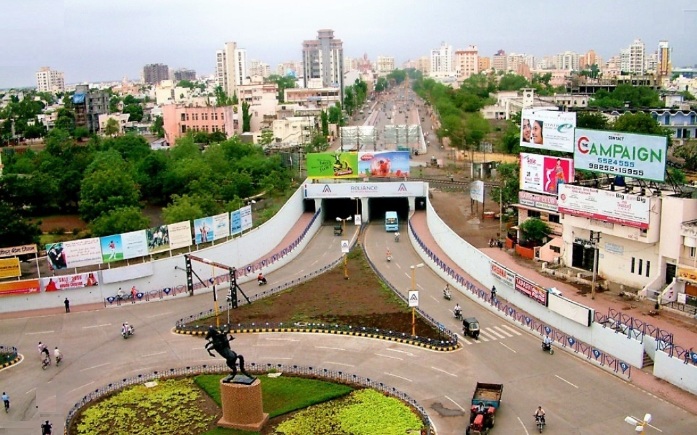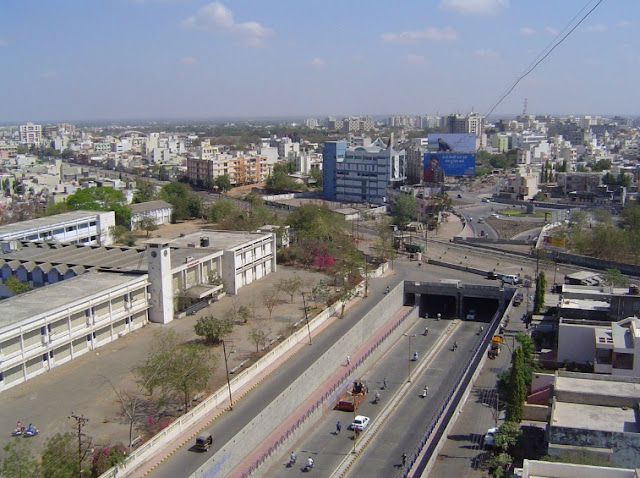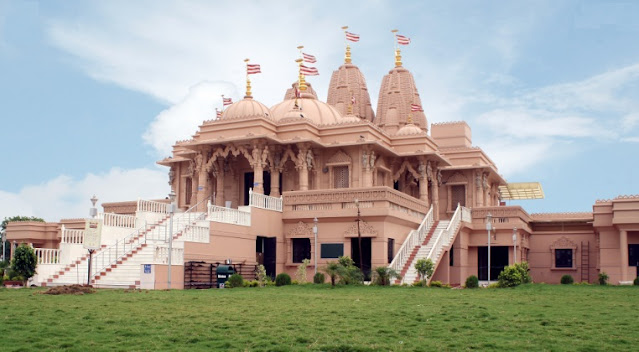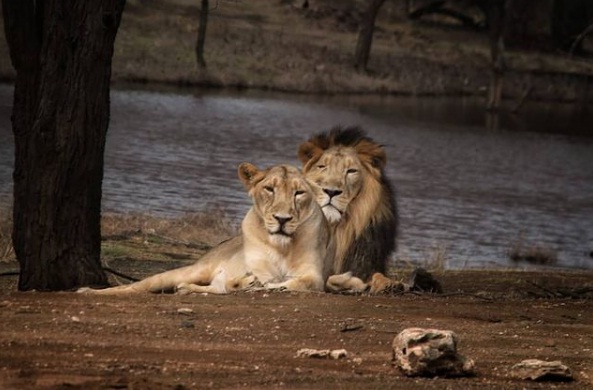RAJKOT CITY HISTORY
Rajkot city was founded by Thakorji Vibhaji in the year of 1610
he ruled about 282 square miles area with 64 villages throughout. In 1720 the deputy subehdar MasumKhan belonging to Sorath regiment defeated the ruler and the name of Rajkot was changed,

After that in the year of 1732 the son of the deafeated ruler Meramanji took the revenge of his father’s defeat by defeating Masum Khan again and kept its name Rajkot again
In the year of 1822 the British rule established an agency and kept its name Kathiawad agency. The present Kothi area which houses the customs and railway offices used to house the officials of that british agency during that period. During various changes there was a change in the leadership and again the whole area belonged to the agency which is at present the Sadar area Rajkot was linked with Wankaner through railways in the year 1889. In 1893 rail link was established between Rajkot and Jetalsar. During that time mostly meter gauge trains were used and which formed the main lifeline of the transport within the areas.
In 1921 the political leadership of the Kathiawad first met in Rajkot. And during this time Lakhaji Raj represented the first meet and established the first settlement of the political leadership in the area.
In 1925 Mahatma Gandhi for the first time visited the city and thereby established the first educational activities. Today it is a well established centre for rural industries.
In 1937 Vadhera started a wide agitation again the atrocities of Diwan Viravada and thereby started the first satyagrah. And this was finally resolved by Sardar Vallabh bhai Patel. This resolution was finally let down at a later stage and with this development Mahatma Gandhi started the hunger strike to denounce this move. 1942 quit India movement was also a major contributor for Rajkot to become a major hub for the developments as well.
 |
| Kalawad Road |
Rajkot District at a
Glance
|
District Headquarter
|
Rajkot
|
|
No. of Revenue Divisions
|
6
|
|
No. of Talukas
|
14
|
|
No. of Gram Panchayat
|
592
|
|
No. of Villages
|
616
|
|
No. of Towns
|
10
|
|
No. of Municipalities
|
7
|
|
Total Population
|
30,34,722
|
|
Male Population
|
15,77,759
|
|
Female Population
|
14,56,963
|
|
Sex Ratio
|
924
|
|
Literacy Rate
|
85.44%
|
|
Male Literacy
|
89.90%
|
|
Female Literacy
|
80.60%
|
|
Parliament Constituency
|
1
|
|
Assembly Constituency
|
8
|
|
Dist. Panchayat Seat
|
36
|
|
Taluka Panchayat Seat
|
210
|
|
Total Area
|
11,203 sq km
|
|
Main Occupation
|
Agriculture and Animal Husbandry
|
|
Average Rainfall
|
23.6 Inches
|
|
Climate
|
Hot to Moderate Hot and Dry
|
|
Main Crops
|
Groundnut, Bajri, Jowar, Cotton, Sugarcane
|
First elections of free India
The first elections of India were held in the year of 1052.
During that time the country had 28 states and were divided mainly into three
sections.
The section A had 9 states, section B had 8 states and section C
had 11 states. In this saurashtra state was in two sections.
During the first elections there were in total 496 members in
loksabha and 203 members in the Rajya Sabha and the government was selected by
the total of about 19 crore people voted to select its own government.
In this elections the total voters in saurashtra were 19 lakhs.
These were divided into 55 voting divisions. For Saurashtra vidhan sabha there
were 60 and in lok sabha there were 6 and in Rajya Sabha there were 4 members.
For Saurashtra Vidhan sabha out of the total 60 seats, 55 were
for general category and 5 were for the reserved category.
 |
Swami narayan Temple |
Rajkot's 2021 population is now estimated at 1,933,522. In 1950, the population of Rajkot was 126,153. Rajkot has grown by 55,490 since 2015, which represents a 2.95% annual change. These population estimates
and projections come from the latest revision of the UN World Urbanization Prospects These estimates represent the Urban
agglomeration of Rajkot, which typically includes Rajkot's population in addition to adjacent suburban
areas
Rajkot Population 2021
1,933,522
Famuos Off Rajkot,
Famous for its silk work, gold jewellery and watch parts,
Rajkot is a fast developing city of the nation. It also holds a position in top
10 cleanest cities of India. The city was also a home to Mahatma Gandhi as he spent the initial days of his childhood here.





0 Comments